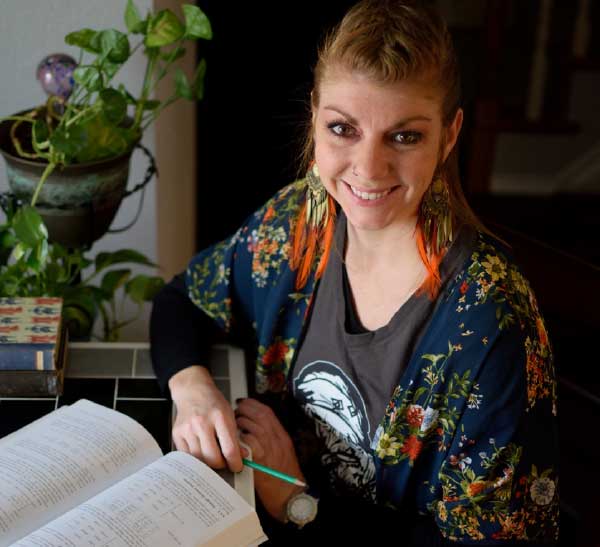Meet a Participant: Kasey Bray

Kasey Bray, a doctoral student in mathematics and participant in the National Science Foundation’s Mathematical Sciences Graduate Internship Program at the U.S. Department of Energy’s Nevada National Security Site, spent her summer developing a method of analysis for researchers studying nuclear material properties.
Seeing in three dimensions: improving microscopy through applied mathematics
Kasey Bray always finds beauty in the difficulty and struggle of problem solving. A fourth-year doctoral student in mathematics at the University of Kentucky, she understands it’s not always a passion shared by others.
“Mathematics is simultaneously stigmatized and esteemed, yet it is overwhelmingly perceived as inaccessible in our culture,” said Bray. “A career as a mathematician affords the opportunity to address such contradictory connotations.”
For those outside the field, mathematics research can be hard to visualize. “We don’t wear coats or goggles, nor tinker with beakers and fancy machines in a lab, and the language we use can sound foreign, if not like straight gibberish,” Bray explained.
Bray understands, too, that applying theoretical knowledge to the real world can significantly impact science and technology on an individual, societal or even national basis.
“A neglect of mathematics works injury to all knowledge,” Bray said.
Recently Bray served as an intern in the National Science Foundation’s (NSF) Mathematical Sciences Graduate Internship (MSGI) Program at the U.S. Department of Energy’s Nevada National Security Site (NNSS). The NSF MSGI program provides research opportunities for mathematical sciences doctoral students to participate in internships at national laboratories, industries and other facilities. NSF MSGI seeks to provide hands-on experience for the use of mathematics in a nonacademic setting.
During her internship, Bray contributed research on the nation’s nuclear stockpile to advance scientific understanding of special nuclear materials and enhance national security.
“As an average American, in an increasingly tense political climate, I find it comforting to know there are competent and trustworthy scientists studying and understanding the nation’s nuclear stockpile in an effort to keep us all safe,” said Bray. “Understanding these aging weapons is imperative to our ability to handle them responsibly.”
Under the mentorship of Aaron Luttman, Ph.D., and Marylesa Howard, Ph.D., of the Signal Processing and Applied Mathematics group at the NNSS, Bray studied field experiments designed to help scientists observe the behavior of plutonium and other nuclear materials when subjected to extreme temperatures, pressures and shocks.
Scientists can study nuclear material properties by observing how these materials break up into ejected particles. Measuring the size distribution of the cloud of ejected particles can provide valuable insight. The world’s fastest high-resolution camera cannot capture the necessary information, so scientists must utilize light-scattering methods to make such measurements. Specifically, scientists shine lasers through the cloud of ejected particles and then use specialized probes to measure the intensity of light scattered off of the particulates.
“When gathered and analyzed appropriately, the measurements yield information about the particle size distribution at a given moment in time,” Bray explained. “The current setup, however, is ill-defined, leaving us with questions like ‘What wavelength of laser light should be used? How many lasers are necessary? At what angles should the measurements be taken?’ My research sought to answer these questions.”
Bray used tools from linear algebra to analyze data capture methods that would produce the most reliable results. By the end of the internship, she had proposed and tested an approach that could be replicated in future experiments.
Along the way, she forged connections with industry mathematicians and peers, and she learned techniques for acquiring and analyzing raw data. She attended weekly seminars held by peer researchers and went on field trips to historic nuclear testing sites.
“My favorite part about the NSF MSGI program was the environment of collaboration and support for the advancement of colleagues’ projects and careers. There was an air of overall excitement within the group in a ‘Let’s talk about all the cool stuff we’re doing’ kind of way,” Bray said.
“I entered this internship in the hopes of fulfilling curiosity about the role of math in an industry setting. Undeniably, this expectation was satisfied, and the skills I gained will be advantageous regardless of where my career takes me,” she said.
The NSF MSGI Program is funded by NSF and administered through the U.S. Department of Energy’s (DOE) Oak Ridge Institute for Science and Education (ORISE). ORISE is managed for DOE by ORAU.


